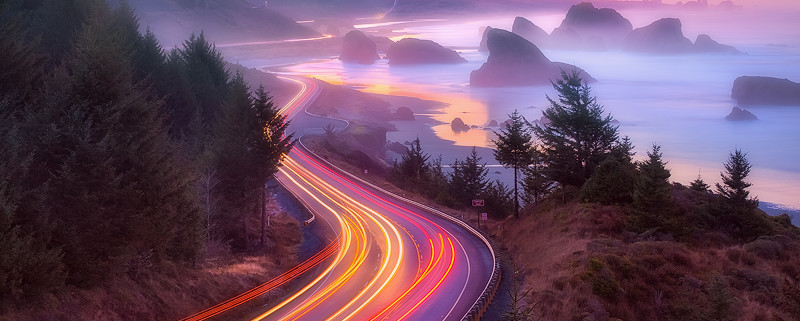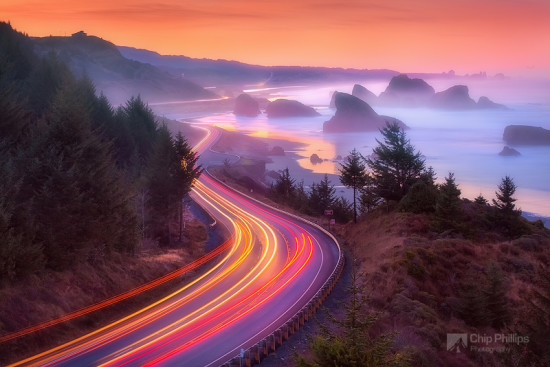Essential Non-Photography Gear of Nature Photographers
Nature Photographers are all pretty good at knowing what we need in regards to camera gear. A good sturdy tripod, camera, and some great lenses, right? Well, there are a few specific non-photography items that I consider essential when I head out for a shoot.
Headlamp
As photographers, we are constantly chasing the best light; this means we spend a lot of time milling about during the dark hours. My weapon of choice for the dark is a Black Diamond LED headlamp. Not only is this a must-have for seeing when it’s dark, but I also use my headlamp for focusing when the light is low. It’s impossible to focus in the dark, so illuminating the subject makes this possible during those situations.
Cleaning Cloths
I carry two types of cleaning cloths with me at all times. One is a black microfiber cloth for removing dust from my lenses and filters, and the other is a more absorbent cloth for wiping moisture. When shooting in the rain or at the ocean when there’s sea spray, I find the best way to take care of moisture is to use a combination of these two cloths. I use the absorbent one to remove the water or sea spray, and then finish it up with the black microfiber cloth. When shooting in situations with a lot of sea spray, it’s helpful to slightly moisten the absorbent cloth with a little fresh water. I first wipe the lens with this moist cloth to clean off the sea spray; then, finishing up with the microfiber cloth in between shots takes care of any sea spray that might find its way onto the front of my lens or filter.
Weather Proof Clothing
I always prepare for the worst. Carry a light set of rain gear in your bag just in case it rains. I also always have a pair of waders with me when shooting around water. Putting these on right away frees up my confidence and I am able to jump right in and get the shot. During winter, dress for the weather. As photographers, we spend a lot of time standing around waiting for the light. It’s essential to dress very warm when it is cold out. I use two sets of gloves; one is a light weight pair of liners that I can keep on and still operate my camera… and the other is a heavy duty set of down mittens that keep my hands warm when I’m not shooting. I put hand warmers in the mittens when it is really cold out. I have a pair of North Face winter boots that I put foot warmers in as well. I also carry a fleece face mask, neck warmer, and hat. The key to keeping your body warm is layers. I wear a merino wool base layer, both a fleece and down mid layer, and a Gore-Tex shell on the outside.
Gear Protection
Make sure you are able to keep your kit out of the rain with a waterproof bag or cover. I use a waterproof F-Stop camera bag. I also carry a plastic Op/Tech Rainsleeve for my camera and lens. These are very light, very cheap, and work very well to keep the rain and sea spray off your gear. I lost one camera to an ocean wave before finding out about these and, needless to say, I now always have one in my bag.
Maps
Most of us have smart phones, right? Google Earth is a great resource for scouting out locations and exploring the area around where you will be shooting. Another useful app that I use is Gaia GPS. This app is available for both Android and iPhone. I use it all the time for marking the exact location of spots that I shoot. If I am out in the middle of nowhere and want to mark the location for future reference, I can simply click on the map within Gaia GPS and mark the exact spot! It even gives me driving directions back to the location if it is accessible by road.
Food and Water
This is an easy one to forget. If you are anything like me, you never really know exactly how long you’ll be out. It’s a good idea to carry food and water just in case your adventures linger past mealtime. For added protection, I also carry an SteriPen UV water purifier. If I run out of water and a stream or lake is nearby, I can just scoop up some water and, in a minute or two, have fresh drinking water.
Critter Protection
The final item of essential non-photography gear that I carry is critter protection. The top three critters that I’m referring two are mosquitoes, ticks, and bears. For ticks, I treat my clothes with Sawyer Permethrin spray and for the mosquitoes I use Deet. When in bear country, I always have a can of bear spray handy. Handy is the key word here too. Make sure you can get at that can of spray instantly or it’s of no use. The best thing you can do to keep the bears at bay is travel in a group and make noise… lots of noise. If this is not possible to travel in a group and you must hike alone, you can still make lots of noise. If I am alone, I clank my hiking poles together and sing songs loudly. I might look like an idiot, but I have never had a scary bear encounter in all my years of shooting.



